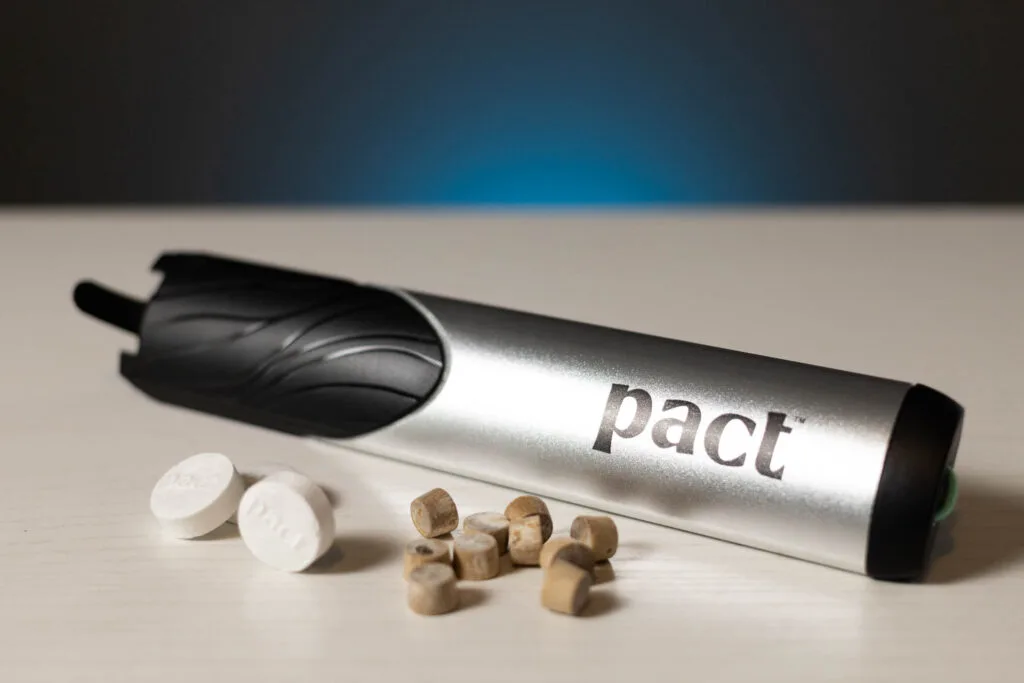The Best Deals on Camping, Backpacking and Outdoor Gear [June 2025]
Watch this video directly on YouTube.
Let’s talk about periods! And I’m not talking about punctuation! Yep, this guide to backpacking or camping during your period goes out to all the people out there who menstruate! Because we want to help you get outside to play even when you’re menstruating. Because being on your period while camping or hiking or kayaking or backpacking shouldn’t be scary and it shouldn’t keep you from recreating if you don’t want it to. So here are a few tips, tools, and advice (and more sustainable products) to make camping on your period more enjoyable.
Camping and Backpacking on your Period
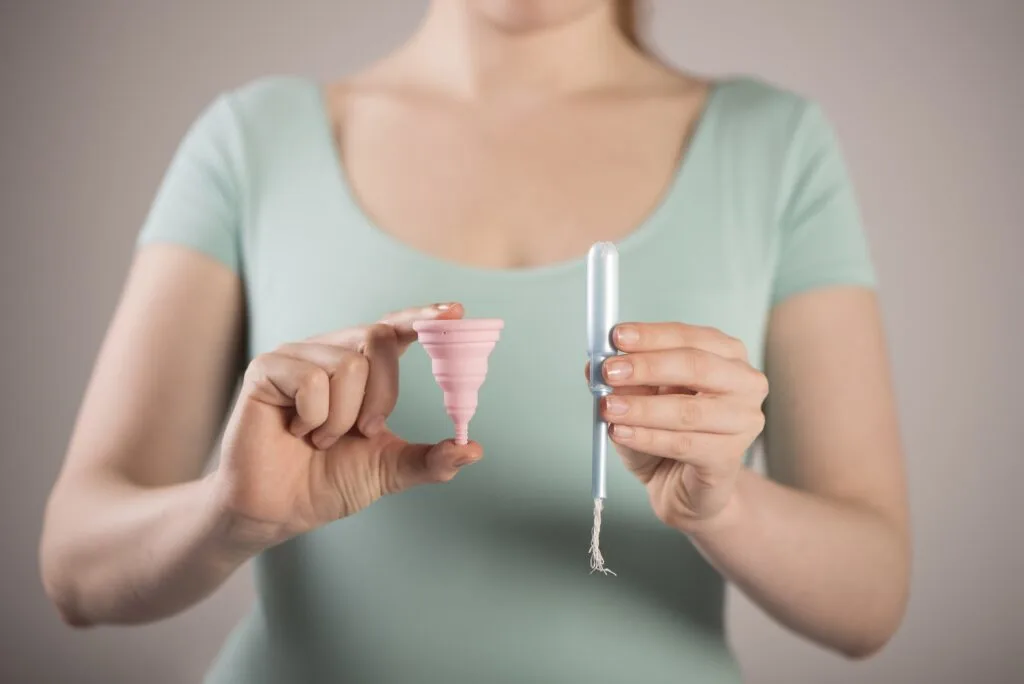
Period Solutions
First things first: dealing with your period, indoors or outdoors, is a very personal thing. What works for one person isn’t necessarily going to work for another. So remember that all of these tools and products are just options. Pick whichever one works best for you and that you feel most comfortable with and make it work. There’s no wrong way to handle camping while menstruating (well, there is, but it has more to do with disposal and we’ll get to that in a minute).
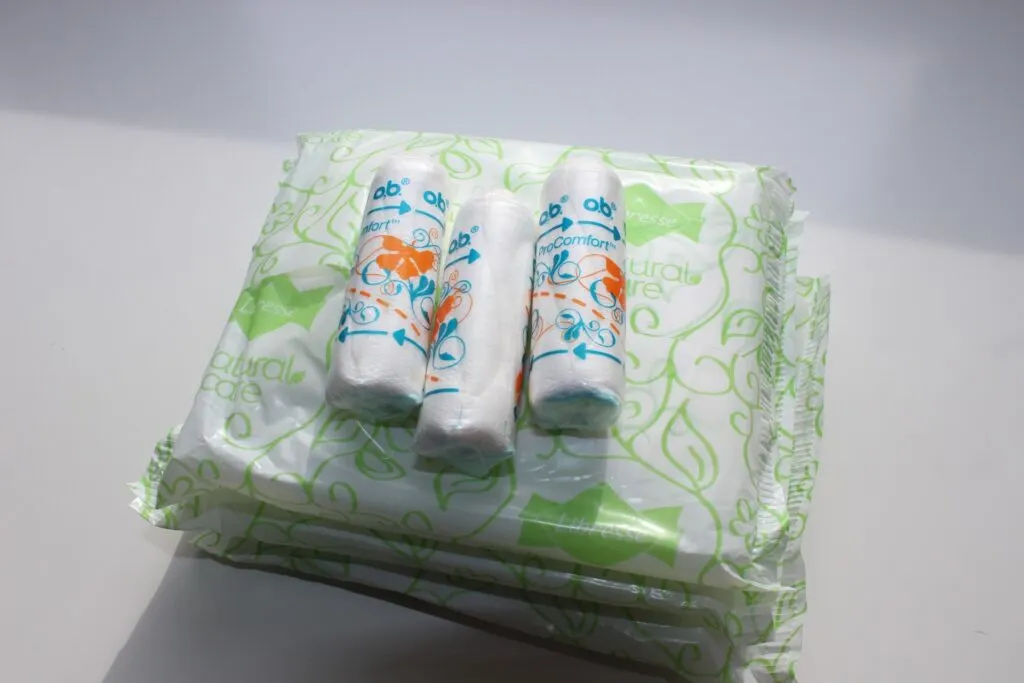
Pads and Tampons
Let’s start with the traditional solutions for camping while on your period: pads and tampons: The options most people are probably most familiar with. Now, I’m not a big fan of these for a couple of reasons:
- It’s expensive to keep a steady supply of disposable products on hand at all times. The average person spends $20 per cycle on this stuff, which totals somewhere in the ballpark of $240 per year or $18,000 over their lifetime! That’s over three times as much as my first car!
- These items take up a ton of space in your pack before and after they’re used. And you absolutely have to pack all of it out, so not only do you need plenty of bags in which to dispose of used items, but they’re going to be much heavier on the way out than they were on the way in. Because blood.
- They’re all single-use, meaning they create a lot of waste. The packaging of these items alone adds up to about 400 pounds of landfill waste over a single person’s lifetime, and the average person will dispose of a minimum of 5,000 single-use items over the course of their life. In the UK, that amounts to 28,114 TONS of waste every year! And since a lot of it is made of plastic, it doesn’t break down for hundreds of years.
Now, there are reusable pads and liners if that’s the device you feel most comfortable using. I’ve had friends who use them and are fans. One of the newest on the market is from one of my favorite brands, Kula. They make reusable, anti-microbial pee cloths that I’m obsessed with and, now, waterproof, anti-microbial liners.
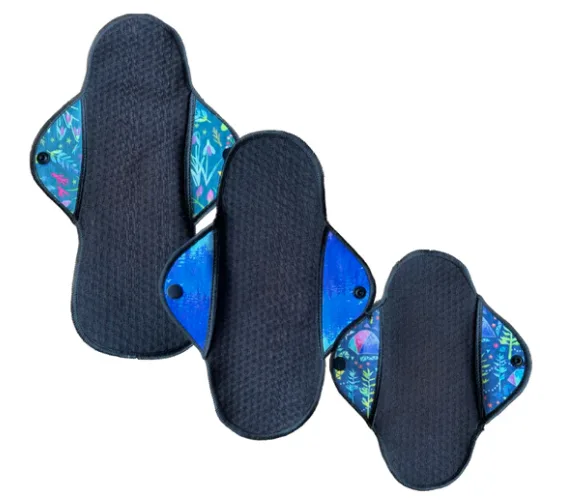
These–Kula and other brands–work via absorption, of course, but then allow you to rinse, wash, dry and reuse. Kula in particular dries super fast, so you’d likely only have to bring a couple with you on longer trips and rotate them, giving each a good wash each time you swap one out.
If you’d rather wait until you get home to do that, you can always fold them up, stick them in an opaque bag, and pack them out.
Similar to reusable pads in that they don’t require any sort of insertion, are reusable underwear. There are several brands that make super absorbent underwear designed to be worn during menstruation. Proof is one we’ve tested before and are impressed with, Thinx and Saalt are others.
Many of them are even quite comfortable. To the point where it often doesn’t feel like you’re wearing any sort of special underwear at all. As in, if you hate using pads because of how present they feel, well-designed period underwear don’t tend to be like that at all.
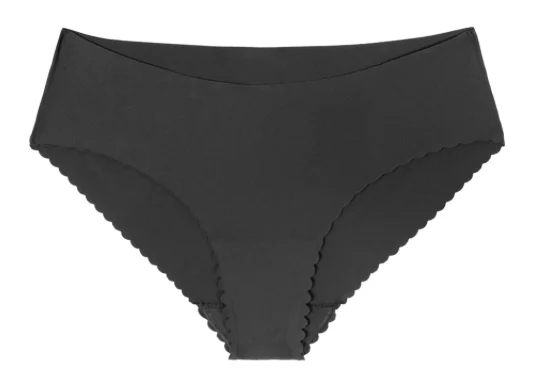
And depending on how much you bleed, you may just need to bring one or two pairs per day of your trip because there are options for light and super heavy flows.
On the downside, period underwear aren’t quite as easy to clean in the backcountry as some of the other options we’re talking about here. Though you certainly can wash, dry and reuse them (we’ll talk more about that below). But if you don’t want to do that, you will have to pack enough to last the duration of your trip.
If you’re not gonna wash them, again, bring an opaque bag like a duct-taped-over zip-top, small dry bag, or a dark-colored reusable silicone bag like a Stasher, and when it’s time to change your underwear, drop an old pair into the bag and put a fresh pair on.
Now, If you would rather pack fewer pairs and do some backcountry laundry to clean your reusable pads or underwear–whether or not you plan to wear them again on the trip–You must follow Leave No Trace principles.
Which means you must do your washing, especially if there’s soap involved, at least 200 feet or 70 paces away from camp or water sources. Then, rinse them well, use biodegradable soap to wash, rinse again, wring out as much water as you can, and hang to dry. You can do the same with reusable pads.
You will probably want to use filtered and purified or boiled water to do so. After all, these items will be in contact with sensitive areas.
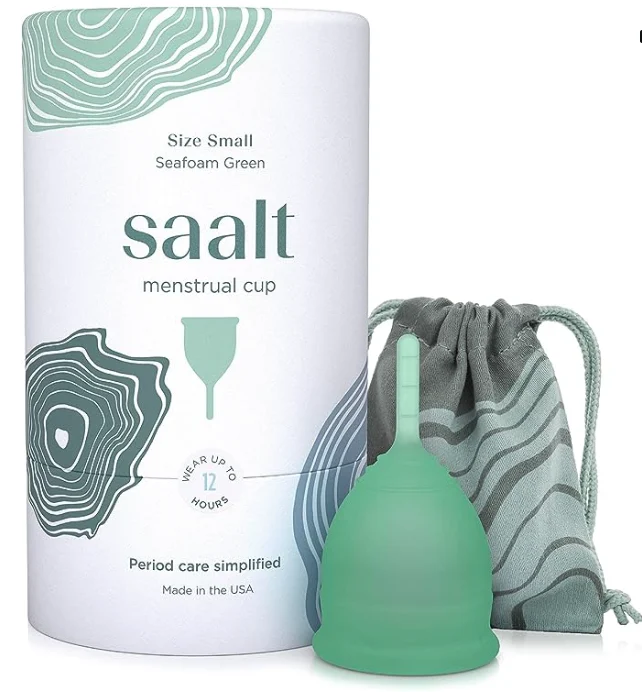
Menstrual Cup
But let’s move on to one of my favorite devices for hiking, backpacking, or camping during your period: the menstrual cup. There are lots of brands of these available, like from Saalt and Diva Cup, but they all generally do the same thing: they’re flexible silicone cups that you insert just like you would a tampon, but instead of absorbing blood, they catch it like a bowl.
There are different sizes available depending on whether or not you’ve had kids, they’re easy to insert and remove, and even easier to empty. Just squeeze to remove, dump it out, give it a rinse with a little bit of water, wash if possible, and re-insert.
These are one of my favorite menstrual devices for a few reasons. One, because they’re endlessly reusable. Buy it once and it will last you for years. TEN years according to some brands.
Which means you don’t have to keep buying feminine hygiene products over and over again every month. Love that. It’s way less wasteful and so much cheaper. I mean, one cup costs about $20-$40. That’s the same amount as you’d spend on disposable for just one or two cycles. That’s huge!
But I also love these because you don’t have to pack anything out. You can simply dump the contents into a cat hole. (Here’s a refresher on how to go to the bathroom outdoors and what a proper cat hole looks like.)
The downside to using a menstrual cup outdoors is that your hands really should be clean if you’re going to be inserting items into your body. So you’ll definitely want to make sure that you’re washing your hands before and after you use one. Which you should already be doing, so…
Along those same lines, It can also be a bit messier than using, say, a pad or tampon. Not a lot messier, especially once you get the hang of it, but these are your own bodily fluids, here, and as long as you’re being clean about it and washing your hands afterwards, there’s really nothing you need to be afraid of.
There’s no risk of toxic shock syndrome with menstrual cups, though, so that’s a major plus! And you can sleep in them! And use them on heavy or light days (no dry tampon syndrome here)!
Just bring a few extra wet wipes or, my favorite, Pact Outdoors compressible wipes (use code QWS204DPLOQM5 for a 10% discount) that expand with just a few drops of water.
There are other options, of course, like menstrual disks, which are kinda like cups but smaller, but they tend to be variations on cups.
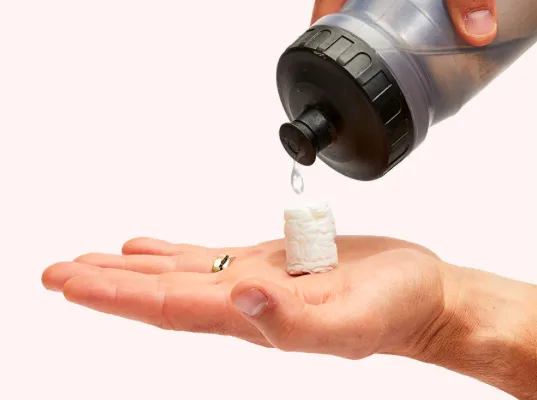
Complimentary Products
Naturally, there are a few other things you might want to bring along in addition to actual menstrual products when camping during your period. Pain killers, naturally. Don’t forget to bring more than you usually would if you tend to suffer from cramping.
Then, if you’re using disposable products, reusable pads, or period underwear, make sure to bring an opaque bag for packing out your trash. A reusable bag that you can wash when you get home and reuse the next time you hike during your period is ideal.
Next, you’ll probably want to bring extra wet wipes. One friend of mine just brought a package of regular ol’ baby wipes when we went backpacking during her period, but those are heavy, so I prefer to pack some compressed wipes from Pact Outdoors, which weigh practically nothing and take up zero space, but still turn into a 9×9 wet wipe when you add a few drops of water. Those are my go-to for backpacking any time of the month, honestly. I bring them instead of toilet paper. Combined with Pact’s mycellium tabs, when dropped in a cathole, they compost super fast.
You can also use a Kula Cloth, my favorite antimicrobial and reusable pee cloth. The absorbent side of the fabric is black, so blood doesn’t show up, and you can wash it out as often as you need to and then reuse endlessly. Heck, you could get it damp and even use it as a wet wipe.
It is just for liquid waste areas, though, so keep that in mind.
How to Dispose of Period Products Outdoors
But there’s one more important thing we need to discuss and that’s how to dispose of period products and blood when you’re outside.
First things first: if you’re camping while on your period or backpacking with your period, check the rules and regulations of the area you’re recreating in to see if you’re allowed to dig cat holes. If you are, you can dump the content of menstrual cups and the like in a hole 6-8 inches deep and cover it back up.
If you’re not allowed to dig catholes, you gotta pack everything out. Yup, everything. Wipes, single-use products, some locations may even request that you pack out blood when using a cup, though honestly, I haven’t seen this anywhere.
But it could be the case in places where you can’t dig a cat hole. If you’re unsure, at least give the area where you dumped your cup a good rinse before you leave. Remember, the goal is to leave no trace that you were ever there.
If you do have to pack it out, consider putting duct tape (for privacy) around a sealable container like a Gatorade bottle or a repurposed food container with a screw-on lid like those plastic gelato containers.
And remember, if you’re doing any rinsing or washing off any of these products, use filtered and purified or boiled water only. If you wouldn’t drink it, don’t put it in or near your bits.
Also, because I know you’re thinking it, no, you will not attract bears when you’re on your period. There’s no science to support that. Some folks suggest storing any used disposable products in a bear canister in bear country, just in case, but you don’t have to do that with solid waste when using a wag bag, so it seems unlikely to be that important in this case.
Also, also, if you don’t wanna deal with any of this, like, ever, and you’re not trying to get pregnant, might I recommend an IUD? 😅 The hormonal one, not the copper one. Many people who use them don’t even get a period anymore. It’s awesome.
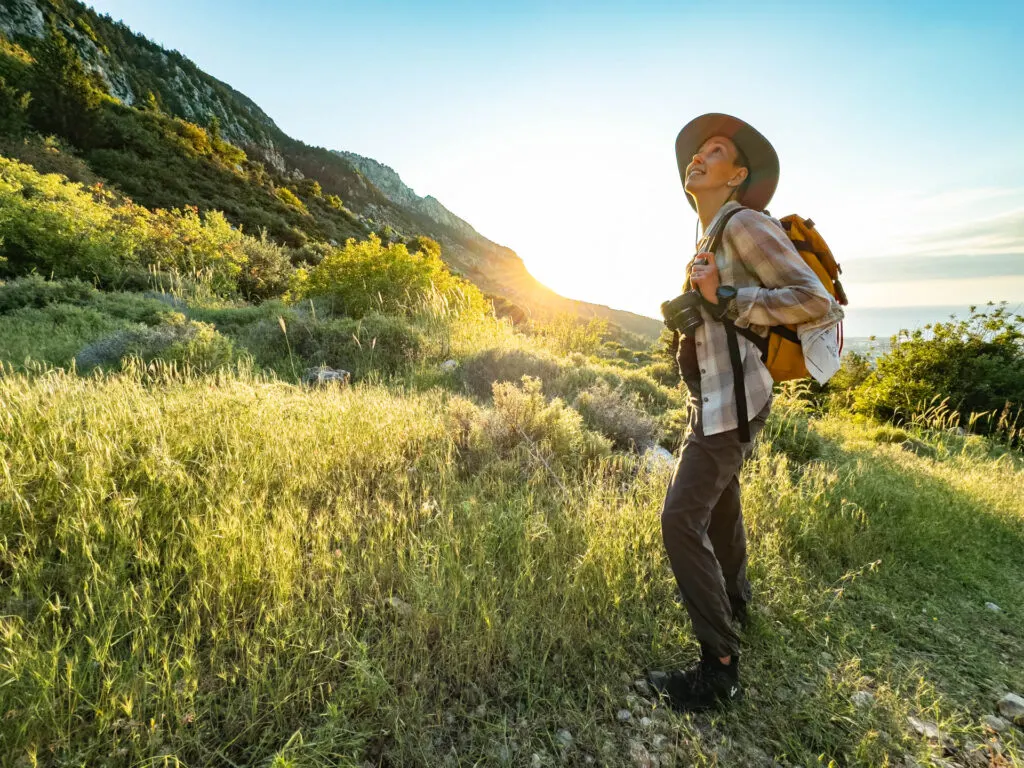
Bottom Line
But you do you when it comes to menstruating in the outdoors. Just remember to be prepared, don’t try a brand new period solution for the first time on a backpacking trip, it’s just a normal bodily function, and leave no trace. Just don’t let it stop you from wandering on.
•
This post contains affiliate links, which means when you clicky-click and make a purchase, we may receive some compensation. Don’t worry, it won’t cost you any extra, but you will be supporting Terradrift! That’s what we call a win-win!

